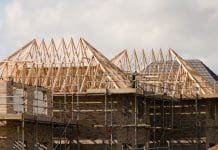Housebuilding is an emotive issue at the best of times but in the face of a full-blown crisis in supply, the need to deliver many more homes, in the right places, cannot be ignored. Joe Ridgeon, director of Hedley Planning Services, examines the key issues affecting supply
As we wrestle with one of the most protracted housing crises in living memory, the government faces calls from many quarters to stop changing the planning system. If it does, it would create the much sought-after stability that is so desperately craved to prevent delay, procrastination and uncertainty in local planning.
A damning report by the Public Accounts Committee (PAC) recently warned MPs that government needs to tackle “inherent problems at the heart of the planning system” to have any hope of reaching its ambitious goal of building 300,000 homes a year. The report claims the Ministry of Housing, Communities & Local Government “simply does not have the mechanisms in place to achieve the … target” and urges ministers to set out their plans to boost building rates by October.
The number of new homes built has recovered from a dramatic slump following the financial crisis to 222,000 in 2018, but the 10-year average is still just 177,000. So, there’s no question that Britain continues to face a chronic housing shortage – one that won’t disappear unless urgent and strident action is taken.
Approvals for development have increased by almost 50% since the National Planning Policy Framework (NPPF) reforms in 2012, the reality is that it is completions that have failed to keep pace. These still lag well behind the 200,000 a year former PM David Cameron promised when he set out his housebuilding target back in 2016, and well short of the 300,000 houses most local authorities and planning experts believe the country desperately needs.
Clearly, having available land for residential development is critical. Yet land supply relies on private owners, who are determined to withhold sites until their value can be fully maximised. Planning changes may not herald the rapid delivery of volumes of affordable new housing. So, the adoption of wider changes to incentives could be one approach to open up more land for development, rather than focusing on blaming planning.
Moreover, the constant shifting of the goalposts fails to provide clarity and surety for planners working for both councils and developers. For example, the government introduced a standard methodology for calculating housing need based on ONS data in September 2018. As soon as the new (2016-based) data came out, it had the opposite effect of reducing housing need, so the government had to revert (to 2014-based data) in February 2019. This resulted in five months of confusion and no progress.
There are some obvious improvements to the planning system. More resourced local authority planning departments can only be beneficial – the production of local plans and decisions over applications will inevitably be speeded up.
Another look at the sanctity of greenbelt may also help to bring about the realisation of the hundreds of thousands of new homes the country requires annually. Between 1979 and 1997, the size of the designated Green Belt more than doubled, from 721,500 hectares in 1979 to over 1.6m hectares in 1997. Since then there have been some year by year variations but over the last two decades, the amount of Green Belt has remained above 1.6m hectares.
The NPPF grants greenbelt a lot of protection – development of more of England’s green and pleasant land is more or less seen as a last resort. While this offers a good deal of comfort to many, we must at the same time start to think the unthinkable?
Housing is unquestionably an emotive issue and the call to build and build that echoes across the land will not be welcome by everyone. But it’s clear that more houses, in the right places where people want to live, is paramount. Planning alone can’t solve the issue. However, braver and brighter new thinking and adopting land reform can surely offer one possible way forward, proposing a new hope for millions struggling to take their first steps towards homeownership.
The planning landscape will continue to evolve in the face of revisions to national policy. Despite the uncertainty caused by a post-Brexit landscape, housebuilding will be a busy sector and we want to encourage smaller builders to enter the market over the next few years – and it’s vital that effective and stable planning is in place to facilitate this.
It’s crystal clear that all involved in planning and development need to think hard about the long-term legacy for those who live in the houses we build. However, in the clamour to deliver the quantity and quality of new homes this country desperately needs – 300,000 units per year – it’s as important as ever to continually strive to consider new opportunity for design innovation and think beyond today’s norm.
Joe Ridgeon
Director
Tel: +44 (0)191 580 5101
enquiries@hedleyplanning.co.uk
Twitter: HedleyPlanning
Facebook: Hedleyplanning
LinkedIn: Hedley-planning














